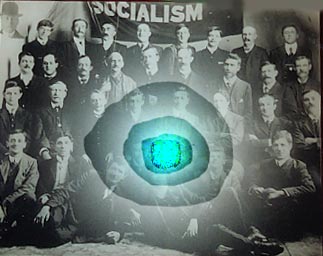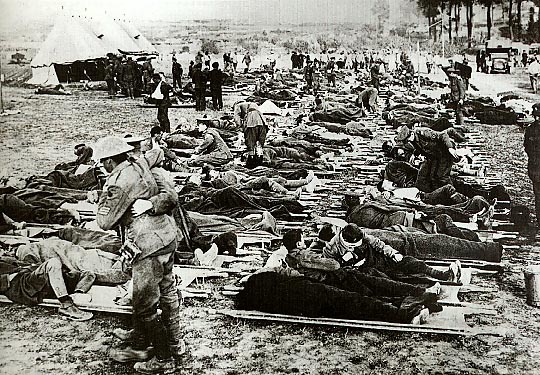World Socialist Party (New Zealand)
History of the WSPNZ
The voice of Socialism has been heard in New Zealand for over 70 years, and a Socialist Party has existed since 1930.
Socialist ideas (as we know them) came to New Zealand from Britain, Australia, and Canada around 1900. But those who endorsed the Marxist theory of the class struggle always were in a minority. Most politically-minded workers favoured instead the idea of a "Labour Party", a non-theoretical reform party supported by the trade unions. Would-be labour leaders did exist before, but it was only in 1916 that they united to form the New Zealand Labour Party.
One of its forerunners was the New Zealand Socialist Party, set up in 1901. This did have the merit of introducing the works of Marx, Engels, and Kautsky to the workers of Aotearoa, somewhat illogically alongside its reformist ideas.
As early as 1911 there were individual socialists: readers of the Socialist Standard from Britain, the Western Clarion (the then-journal of the Socialist Party of Canada), and the International Socialist Review from America, which urged workers to write "Socialism" across their ballot paper rather than vote for any pro-capitalist candidate. In 1912 some of these came together in the Petone Marxian Club, based on the principles of the Socialist Party of Great Britain, which met regularly for over a year. The war, however, placed severe restrictions on socialist activity.

1901: Socialists gather at Wellington, but sadly, they were quite reformist.

1916 - workers as cannon-fodder for capitalism.
Conscientious objectors were hounded, and overseas socialist journals barred. It was not until 1918 that things got started again when in Christchurch the New Zealand Marxian Association, with the same principles as the Petone Club, was set up. Its members pledged themselves to "render political support to none other than a Marxian Revolutionist, endorsed by the New Zealand Marxian Association, at all elections of candidates for public office in New Zealand", a clear declaration of opposition to all other parties including Labour.

1916 - workers as cannon-fodder for capitalism.
The Marxian Association, in which former members of the Socialist Party of Canada were active, made an impact in 1920 when Moses Baritz, whom they had invited to New Zealand, and who had (among other things) clashed with the Labour leader Harry Holland, was deported by the government.
LONG LIVERS
Unfortunately, the Russian revolution had a disruptive effect on the new party. A minority (dubbed the "long livers" presumably because of the way they ended their speeches and manifestos) were in favour of the Bolsheviks. They left in 1921 to become, together with some dissident Labourites, the Communist Party of New Zealand, set up in March of that year in Wellington.
It is a sad proof of the socialist contention that the Russian revolution put the clock back as far as the growth of the socialist movement is concerned that the Association ceased in 1922, and that it was not for another eight years that socialists in New Zealand organised themselves again. In 1930, former members of the Petone Club and the Association, with the help of seamen members of the Socialist Party of Australia, set up the Socialist Party of New Zealand, which has remained in existence ever since, now called World Socialist Party (New Zealand).

1932: unemployment all over the world
LABOUR CLAIMS EXPOSED
As part of a world socialist movement, the new party was able to use journals and pamphlets from Britain and Canada to spread socialist understanding. In 1934, the Party published five issues of its own journal, the Socialist Review, which had to cease because of lack of funds. The new SPNZ tried to get workers to recognise that it was the private ownership of the means of production that was the cause of their problems, and that only Socialism was the solution. On the political field, the Party exposed the claims of Labour to be able to govern in the workers' interests, and of the Communist Party that socialism was being built in Russia, both of which were popular views at that time, but are now discredited. Social Credit theories were also debunked, though they staged a brief comeback in the 1960's.
In 1935, the Labour Party won the election and was to rule for the next fourteen years. Needless to say, Labour administration of capitalism was no different from that of other parties. When the war broke out, the SPNZ issued a socialist anti-war statement which said there was "no cause at stake justifying the shedding of one drop of working class blood". As a result of this, there were police raids (under a Labour government which included several who had suffered for opposing the First World War!) on the homes of the Party's General Secretary and Overseas Secretary. They were warned that "holding these opinions is one thing, but expounding them could land you in jail." This did not prevent the SPNZ issuing a leaflet for the 1943 election. The following year, the Party was again to have a journal, the Socialist Comment & Review, printed in Australia (the first printed edition of which appeared in December 1944, the government having with-held newsprint supplies till then.) This appeared until May 1948, and provided a useful vehicle for socialist propaganda.
Once again, the main opponents were the Labour and Communist parties. During this period, both Australia and New Zealand had Labour governments and the anti-working-class actions of both of them are documented in the columns of the Socialist Comment & Review. The Communists were easy meat as at that time, they were ultra-patriotic and advocates of increased production, at least until 1947 when it was decreed that "American imperialism" was the main threat to the British Empire, which seemed to upset them.
DISAPPOINTING YEARS
In 1949, the Labour Party was thrown out in New Zealand. Two years later, its original commitment to "the socialisation of the means of production, distribution, and exchange" (that is, to wholesale nationalisation or state capitalism) also went. This had been popularly regarded as a definition of Socialism, but the reference to exchange shows that it was not. Labour won the 1957 election, and had another three disappointing years in office. Demands began to be raised for a return to "full Socialism" and a restoration of the party's original aim. But its leaders were against this. When Nordmeyer took over in 1963, he made the fatuous comment that "there is no place today for what used to be known as the class struggle", as if Labour had ever thought there had been. But the next year, he made a more intelligent remark when he pointed out that "you cannot have Socialism without socialists". He argued from this that as people did not want Socialism, the Labour Party should, in effect, adjust itself to capitalism. Socialists drew a different conclusion: that they ought to make more socialists so that Socialism can be established. Nordmeyer's argument merely illustrated the fact that instead of Labour parties gradually changing capitalism, capitalism gradually changes Labour parties.
PAPER COMMITMENT
Unlike the Communist Party of New Zealand which claimed that Labour had "abandoned Socialism", the WSPNZ says Labour never did have Socialism as an aim, but only a paper commitment to state capitalism. The Communist Party followed the zigs and zags of such parties everywhere, and in the Russia-China dispute it came out in favour of China. The only explanation for this seems to be that one of its policies for a prosperous New Zealand capitalism was more trade with China, which is easier than trade with Russia. Later, a rival pro-Moscow Socialist Unity Party appeared.
The only party in New Zealand to stand for Socialism is the WSPNZ, which, with the help of socialist literature from Britain and North America, carries on the struggle for world Socialism.
